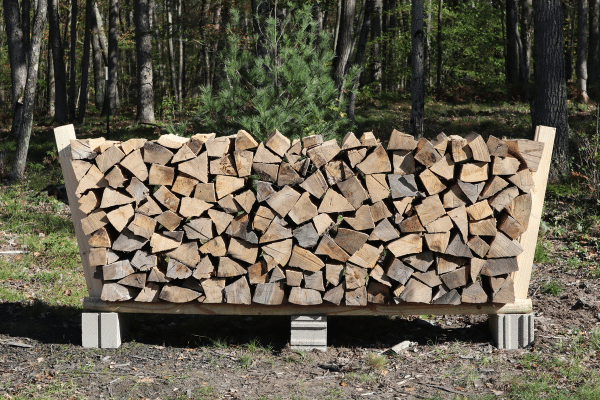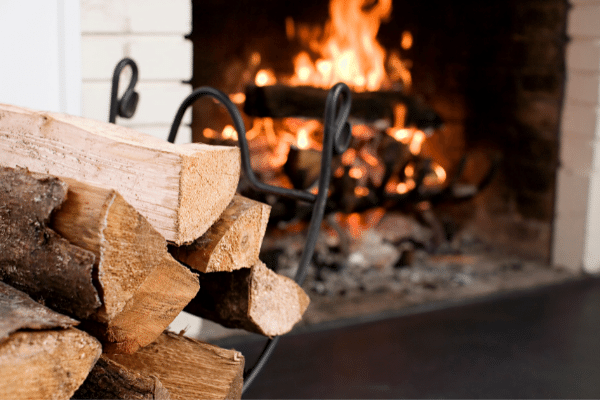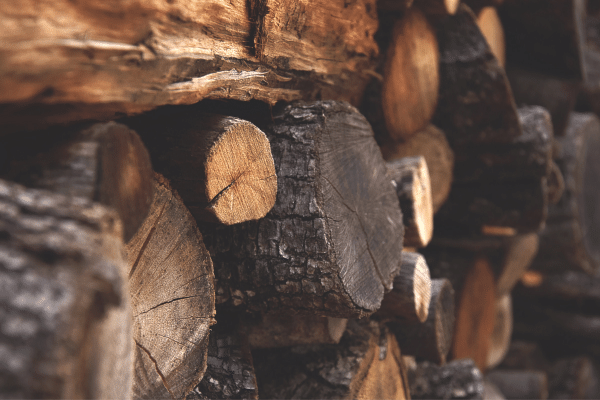- Home
- Types Of Firewood
- Face Cord of Firewood
Face Cord Of Firewood
This post may contain affiliate links so I earn a commission.
When purchasing firewood you will hear all kinds of units of measurement batted around like a cord of wood, half cord of wood, and even a face cord of firewood.
It is easy to figure out that a half cord of wood is, well, half of a regular cord of wood, but what about a face cord?
A face cord of firewood is equal to one-third of a standard cord of wood.
The cost for each unit is, of course, different.
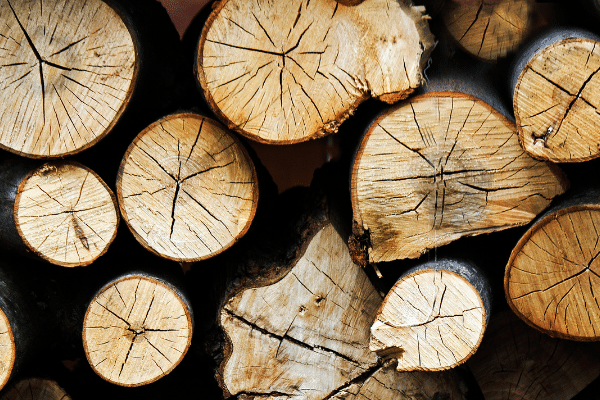
Not surprisingly, it costs less per cubic foot when buying larger quantities of firewood.
A face cord of firewood
is the smallest of these three, yet it is the most expensive on a per cubic
foot basis.
So, why would you want to buy a face cord of firewood?
Let’s find out.
How Much Does A Face Cord Of Firewood Cost?
The price of firewood varies from location to location.
It could also differ based on the species of wood, since hardwoods generally cost more than softwoods.
However, for our purposes here, we will keep the math simple.
A cord of firewood contains 128 cubic feet of wood and costs on average, about $300.
A face cord of firewood, or one-third of a cord, is equal to 42.6 cubic feet of wood.
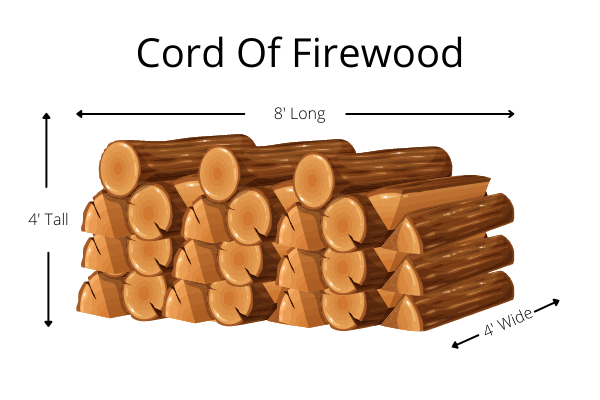
Yet the average cost of a face cord of wood is $200.
The per-cubic-foot price for a cord is $2.34 versus $4.70 per cubic feet for a face cord of wood.
Twice as much money for a third of the wood!
Wouldn’t it make more sense to just buy a full cord?
That depends on your situation.
Storing Your Firewood
You may want to purchase a face cord of wood instead of a full cord of wood if your storage space is limited.
There are some truly lovely old apartments with beautiful, functional fireplaces located in large cities like New York City, Chicago, and Philadelphia, to name a few.
One of the drawbacks of apartment living, however, is that outdoor storage space is almost non-existent.
Buying smaller quantities of firewood eliminates the storage problem while still giving apartment-dwellers a ready supply of firewood for cozy nights by the fire or to heat the home during power outages.
Firewood For Bonfires Or Fire Pits
You may want to consider going with a face cord of firewood if you only need a small amount of wood for your backyard bonfires.
On a balmy summer night with fireflies twinkling in the trees, there is nothing better than sipping some adult beverages with friends while gathered round a bonfire.
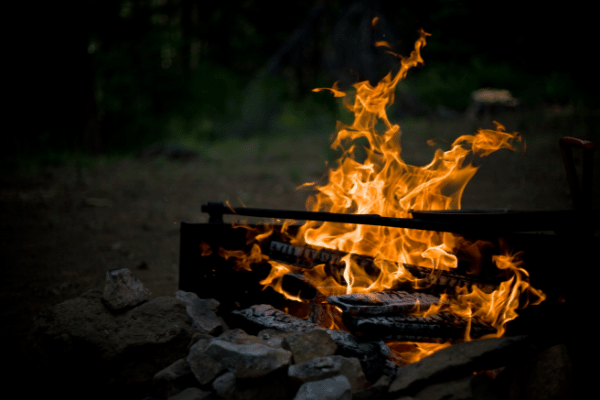
Like many people, we have an actual bonfire pit surrounded with field stones in our backyard,
but I know many people who cannot legally have a bonfire pit.
They can, however, have one of those freestanding, metal fire pits on their patios.
If you have one of those small fire pits or you don’t host very many bonfires, a face cord of firewood might do the trick.
Firewood Used For Camping
If you and your family like to camp from time to time, you might only need a face cord of wood to get you through your outdoor adventures.
A word of caution....be sure to check the local and state laws in your area regarding the transport of firewood.
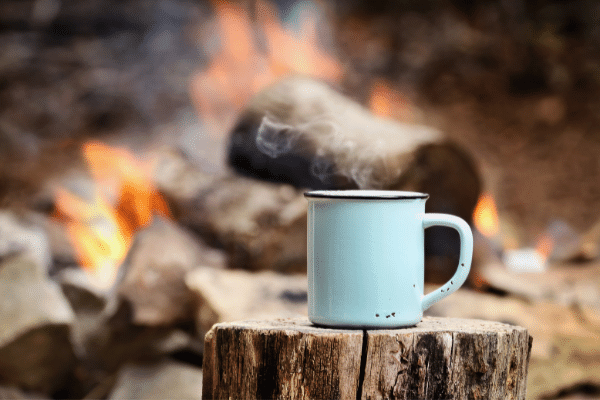
To stop the spread of invasive insects like the emerald ash borer,
some regions have passed laws prohibiting the movement of firewood across state
or county lines.
But if your go-to campsite is nearby or there are no restrictions in your area, a face cord of firewood might provide you with a summer’s worth of campfires to roast your s’mores.
Can Firewood Go Bad?
If for whatever reason, you don’t use a full cord of firewood per season, you may be wiser to buy a smaller amount, like a face cord of firewood, rather than to let the unused firewood sit and go bad.
Go bad?
Firewood doesn’t go bad, does it?
Yes....it can.
Under the right conditions, firewood can last four or five years, or longer.
Under the wrong conditions, firewood can go bad quickly.
Firewood must be properly seasoned for about a year before the moisture content in the wood is low enough – below 20% – for it to burn well.
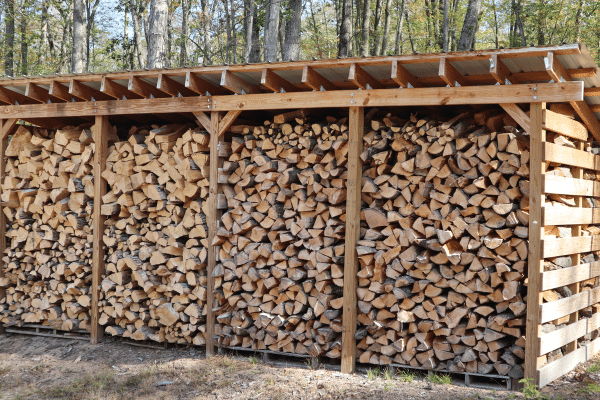
Proper storage means that the wood is off the ground, on a pallet or concrete slab.
Moisture from the
ground can counteract the seasoning process.
The wood should be stacked so that there is some air flow between the pieces.
This too, will help the wood season.
The wood should be stored in a woodshed or under an overhang, so it is out of the rain.
If you don’t have a suitable overhang, you might assume that tossing a tarp over the wood pile is the next best thing.
A tarp will actually inhibit the air flow and trap moisture in the wood so you never want to tarp the entire stack.
Just cover the top 1/3 portion which will repel rain and snow, but allow the wood to breathe.
Firewood that is going bad is typically wood that has not been stored in ideal conditions.
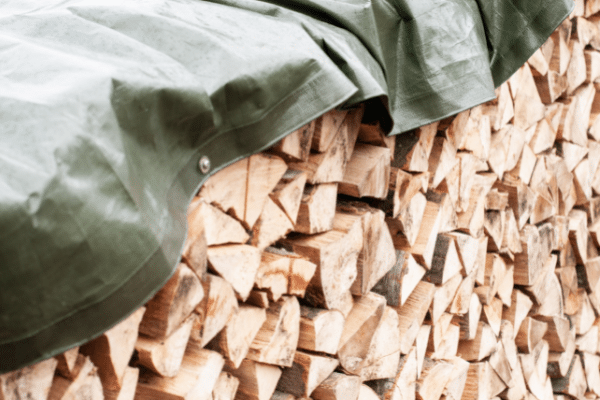
You can tell that it is bad if it looks, feels, and smells wet.
It may smell moldy as well.
When you pick it up, the firewood will not feel firm and solid.
It may even crumble and fall apart.
It cannot be burned in this condition.....it has gone bad.
You may prefer to purchase your firewood in face cords if you don’t have a woodshed or a place to properly store your firewood.
Face Cord Of Firewood - Overall
It took a long time for a tree to grow your firewood.
It would be a shame for it to rot to waste.
The key is to purchase the right amount of firewood to suit your lifestyle.
While the cost per cubic feet is higher, a face cord of firewood might be the best fit for your and your needs.
It is easier to find storage for small quantities of firewood, especially for apartment dwellers or people living in subdivisions with picky homeowners’ association rules.
If you don’t rely on wood as your primary heating source, and only need firewood for your occasional backyard bonfires or weekend trips to your rustic, secluded cabin, a face cord of firewood might provide you with the ideal amount of wood.
